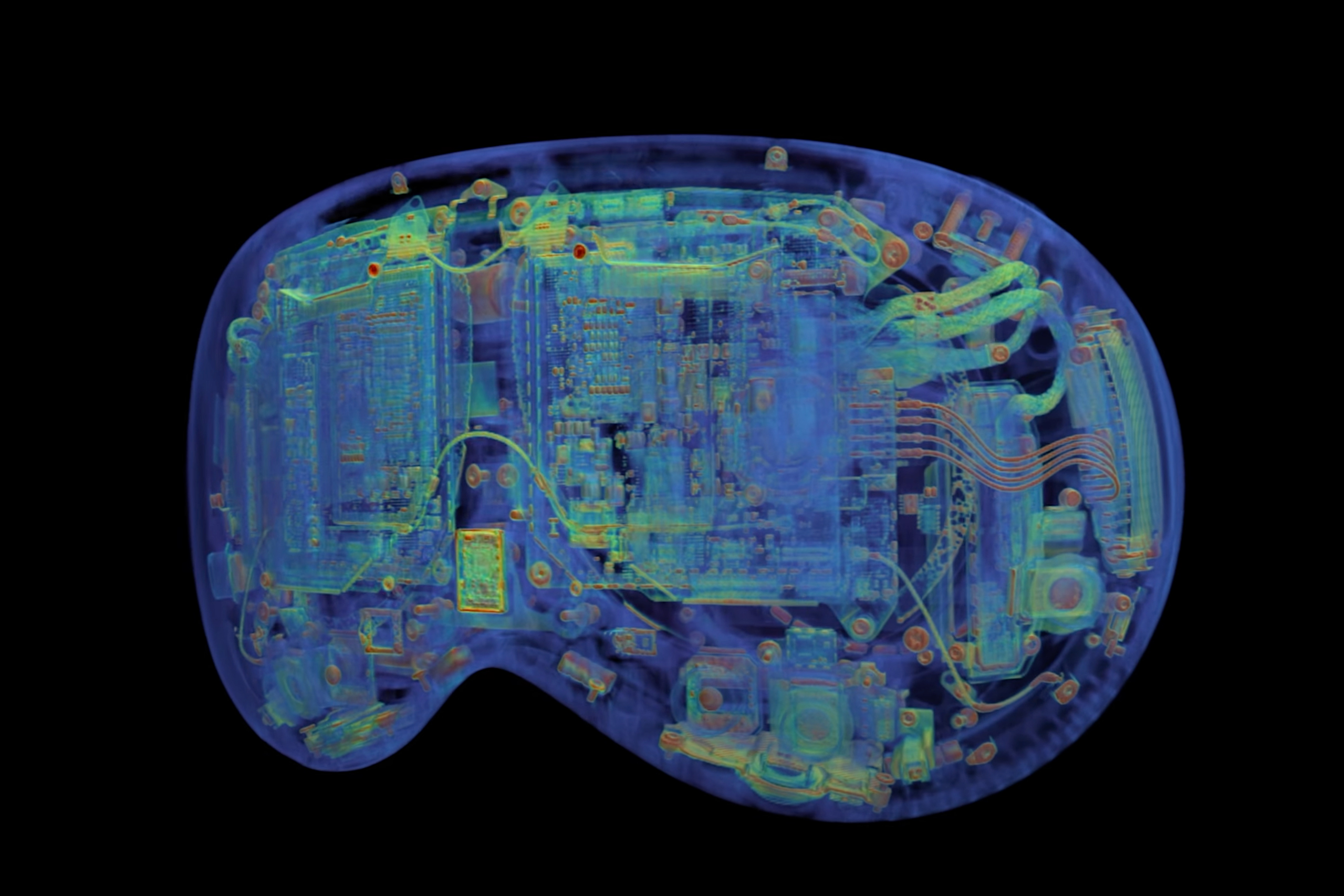Lumafield, a company that makes industrial CT and X-ray scanning software and equipment for designers, has a fascinating blog post and YouTube video comparing the internal structures of the Apple Vision Pro and Meta’s Quest 3 and Quest Pro. The catch is that these aren’t your everyday “took them all apart” teardowns, but rather comparisons of high-resolution industrial CT scans. You get a good sense, especially in the YouTube video, of how these products were arranged and designed differently.
Lumafield
The blog post breaks down its findings into different areas like design, displays, sensors, processors, and batteries, but we’re not really going to learn anything we didn’t already know. The Vision Pro was a design-forward product with expensive choices like angled circuit boards and automatic motorized display adjustment for inter-pupillary distance.
Meta’s headsets are designed to be mass-manufactured at a lower cost, so they make different choices about doing things that are expensive like motorized optics.
Lumafield
It’s worth ten minutes of your time to check out the blog post and YouTube video (embedded below), if for no other reason than to see the slick-looking scans and compare the design priorities of the two companies and how they differ. If we learned anything, it’s that there’s plenty of room for Apple to design a headset that costs a whole lot less to manufacture with only a few minor compromises to the overall experience.
[embedded content]
Source : Macworld











